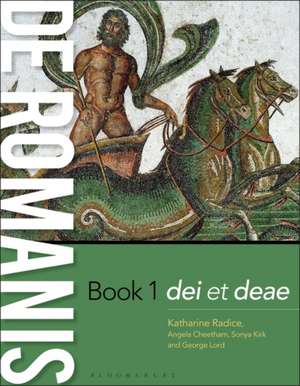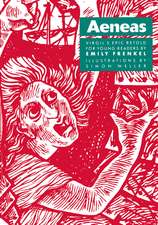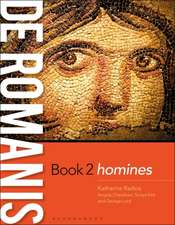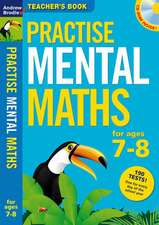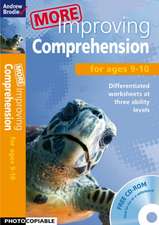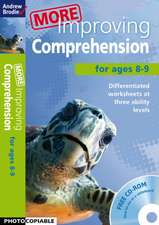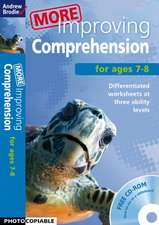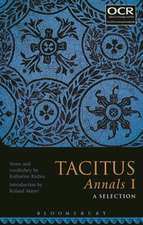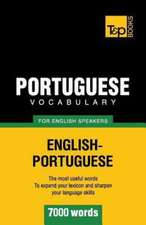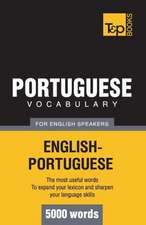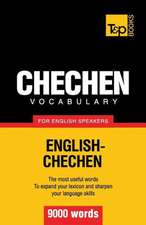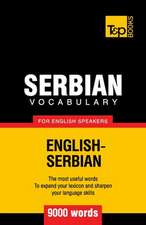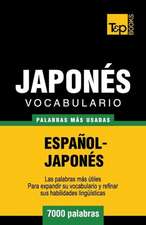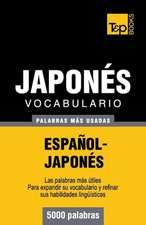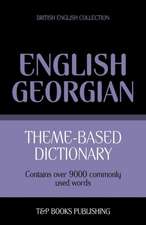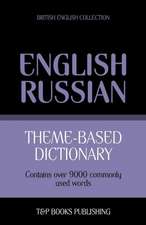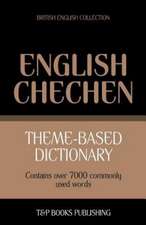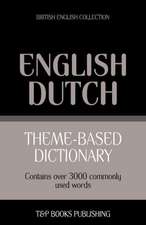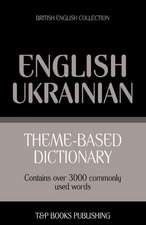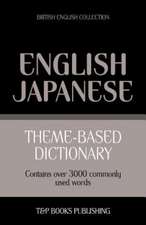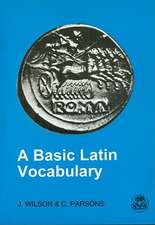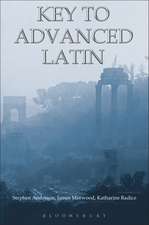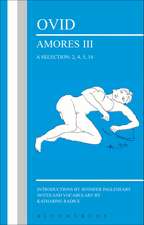de Romanis Book 1: dei et deae
Autor Katharine Radice, Angela Cheetham, Dr Sonya Kirk, George Lorden Limba Engleză Paperback – 15 apr 2020
Preț: 144.73 lei
Preț vechi: 178.84 lei
-19% Nou
Puncte Express: 217
Preț estimativ în valută:
27.70€ • 30.08$ • 23.27£
27.70€ • 30.08$ • 23.27£
Carte disponibilă
Livrare economică 01-15 aprilie
Livrare express 15-21 martie pentru 78.12 lei
Preluare comenzi: 021 569.72.76
Specificații
ISBN-13: 9781350100039
ISBN-10: 135010003X
Pagini: 264
Ilustrații: 78 colour and bw illus
Dimensiuni: 210 x 270 x 16 mm
Greutate: 0.89 kg
Editura: Bloomsbury Publishing
Colecția Bloomsbury Academic
Locul publicării:London, United Kingdom
ISBN-10: 135010003X
Pagini: 264
Ilustrații: 78 colour and bw illus
Dimensiuni: 210 x 270 x 16 mm
Greutate: 0.89 kg
Editura: Bloomsbury Publishing
Colecția Bloomsbury Academic
Locul publicării:London, United Kingdom
Caracteristici
Reading passages for translation from Latin to English relate to the theme of each chapter and cover some of the most famous moments in Roman legend and history, such as Romulus and Remus, Aeneas, Spartacus
Notă biografică
Katharine Radice teaches Classics at the Stephen Perse Foundation, UK. She is a regular speaker at Classics conferences on the methodology of effective Latin teaching. She is an experienced examiner and has co-authored recent A Level editions of Ovid (Bloomsbury Academic, 2011), Cicero (Bloomsbury Academic, 2013) and Tacitus (Bloomsbury Academic, 2016).Angela Cheetham teaches Classics at the Stephen Perse Foundation, UK.Sonya Kirk teaches Classics at the Stephen Perse Foundation, UK.George Lord is an Independent Scholar, UK.
Cuprins
Preface Introduction to the Romans Chapter 1: The Olympian GodsIntroduction and Sources to StudyCore Language including the following Latin stories- Saturn eats his children; Vulcan punishes Venus; Minerva's birth; Mars terrifies the humans Additional Language Chapter 2: Roman HeroesIntroduction and Sources to StudyCore Language including the following Latin stories- Aeneas travels from Troy to Italy; Horatius fights bravely at the bridge; Cloelia swims to safety Additional Language Chapter 3: Roman GodsIntroduction and Sources to StudyCore Language including the following Latin stories- Aeneas, Vesta and the Penates; Romulus is turned into the god Quirinus; An unlucky gateway; The sacred geese Additional Language Chapter 4: Favour and PunishmentIntroduction and Sources to StudyCore Language including the following Latin stories- Evander meets the hero Hercules and together they build the Ara Maxima; Cerberus, the guard dog for the Underworld; The Romans offer a huge sacrifice to the gods; Augustus builds many temples Additional Language Chapter 5: Festivals, Games and ShowsIntroduction and Sources to StudyCore Language including the following Latin stories- The theft of the Sabine women; The Ludi Romani; Spartacus; Violence at a gladiator show; Death of a charioteer Additional Language Chapter 6: ProphecyIntroduction and Sources to StudyCore Language including the following Latin stories- Tarquin and the Sibylline Books; Jupiter tells the future glory of the Roman race; A frightening prophecy; Marius and the sleeping chicks; Caesar ignores two warnings from the gods Additional Language Bibliography Grammar Reference Glossary of Names Vocabulary List (Latin to English and English to Latin)
Recenzii
Contains some interesting innovative features ... Many Latin teachers would welcome de Romanis as appropriate and useful for their students.
This exciting new Latin course has first-rate integration of linguistic and paralinguistic material. The carefully graded stories are all the sorts of stories that the Romans did tell about themselves and to their children.
de Romanis seemed heaven-sent to help me!
One of the many strengths of this course is that it can be adapted for learners of different interests and abilities. The stories and background material chosen for both books are relevant, appealing and a great knowledge base to understand the world of the Romans - women included - without resorting to sugar coating.
We have moved to De Romanis this year, and it has offered students a tremendous balance of exciting Roman background material and logically presented Latin grammar. There are too many things that I like to list them all, but a selection of highlights are: the logical decision to begin with the perfect tense (why had no one thought of this before?), the fact the exercises offer lots of practice on the new grammatical material, the sensibly restricted vocabulary so that students can focus on the manipulation of the grammar, the inclusion of original ancient sources in translation, and the glossy pictures and presentation which are the match of any other Latin course on the market.
It is accessible and carefully structured to enable pupils to develop reading skills and a firm foundation in grammar ... It offers a return to teaching Latin through mythology; the stories in Chapter 1 immediately engaged and entertained our pupils.
The de Romanis textbooks have breathed new life into Latin learning!
Latin lessons with de Romanis feel like a hybrid of English and Maths. This straddles the ability and interest range of the class really nicely, but, more importantly, is preparing pupils far better for progress - and fluency - in reading Latin ... Time will tell how this plays out with uptake at GCSE etc., but what I am confident in is that every pupil will finish this year feeling positive about Latin and feeling like Latin is the subject they actually get.
The first thing to strike about this course is the 'meatiness' of it: the amount of learning material which it provides. Anyone teaching from this course will not go wanting for both cultural and language resources. ... There is an impressive amount of material contained both in the cultural sections as well as the language sections
This exciting new Latin course has first-rate integration of linguistic and paralinguistic material. The carefully graded stories are all the sorts of stories that the Romans did tell about themselves and to their children.
de Romanis seemed heaven-sent to help me!
One of the many strengths of this course is that it can be adapted for learners of different interests and abilities. The stories and background material chosen for both books are relevant, appealing and a great knowledge base to understand the world of the Romans - women included - without resorting to sugar coating.
We have moved to De Romanis this year, and it has offered students a tremendous balance of exciting Roman background material and logically presented Latin grammar. There are too many things that I like to list them all, but a selection of highlights are: the logical decision to begin with the perfect tense (why had no one thought of this before?), the fact the exercises offer lots of practice on the new grammatical material, the sensibly restricted vocabulary so that students can focus on the manipulation of the grammar, the inclusion of original ancient sources in translation, and the glossy pictures and presentation which are the match of any other Latin course on the market.
It is accessible and carefully structured to enable pupils to develop reading skills and a firm foundation in grammar ... It offers a return to teaching Latin through mythology; the stories in Chapter 1 immediately engaged and entertained our pupils.
The de Romanis textbooks have breathed new life into Latin learning!
Latin lessons with de Romanis feel like a hybrid of English and Maths. This straddles the ability and interest range of the class really nicely, but, more importantly, is preparing pupils far better for progress - and fluency - in reading Latin ... Time will tell how this plays out with uptake at GCSE etc., but what I am confident in is that every pupil will finish this year feeling positive about Latin and feeling like Latin is the subject they actually get.
The first thing to strike about this course is the 'meatiness' of it: the amount of learning material which it provides. Anyone teaching from this course will not go wanting for both cultural and language resources. ... There is an impressive amount of material contained both in the cultural sections as well as the language sections
